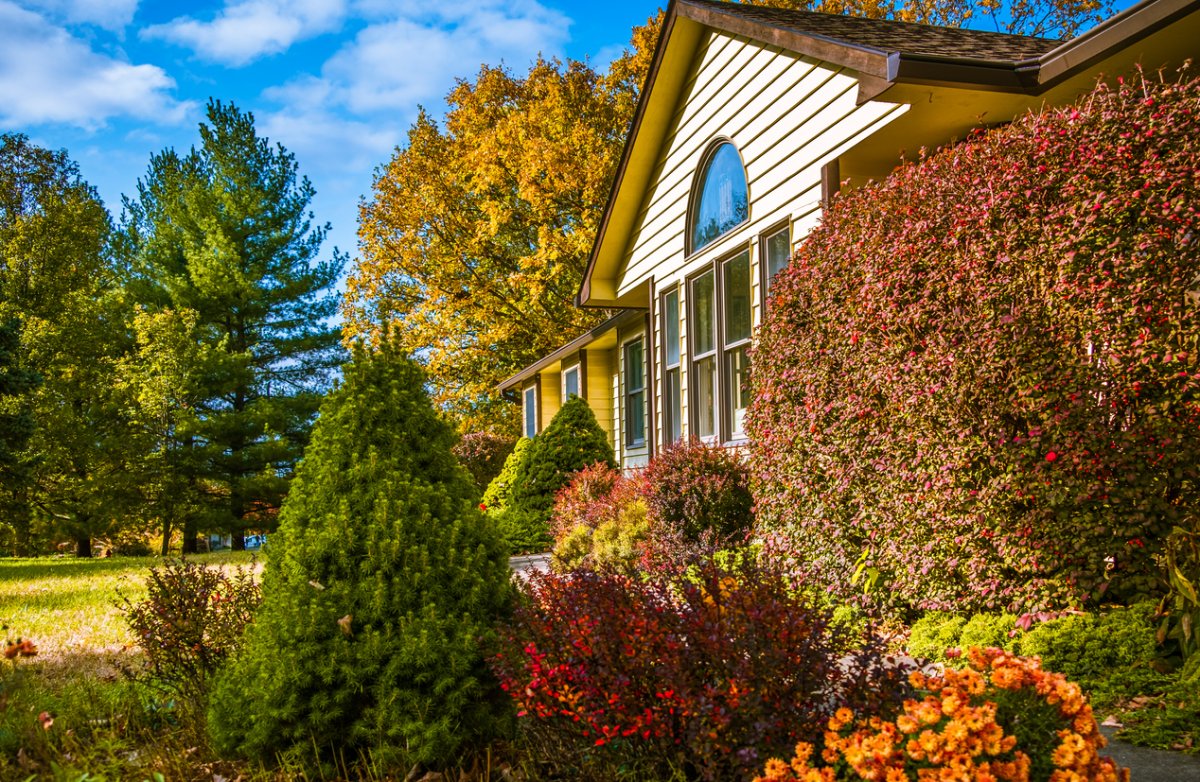

We may earn revenue from the products available on this page and participate in affiliate programs. Learn More ›
Actually, there aren’t any shrubs that really require trimming. They get by without it in the wild, after all. As Alan Titchmarsh notes in “How to Garden: Flowering Shrubs,” “Many gardeners struggle with pruning, but remember that you aren’t actually obliged to prune at all, and…it may be better to leave well alone.”
So, keep in mind that the following low maintenance evergreen shrubs may not look as neat but will look more natural when allowed to grow as nature intended. And some light pruning might be in order if shape or control are concerns. For foundation plants or front-of-house shrubs, opt for slow growing varieties or low growing ones.
1. Anise tree (Illicium spp.)
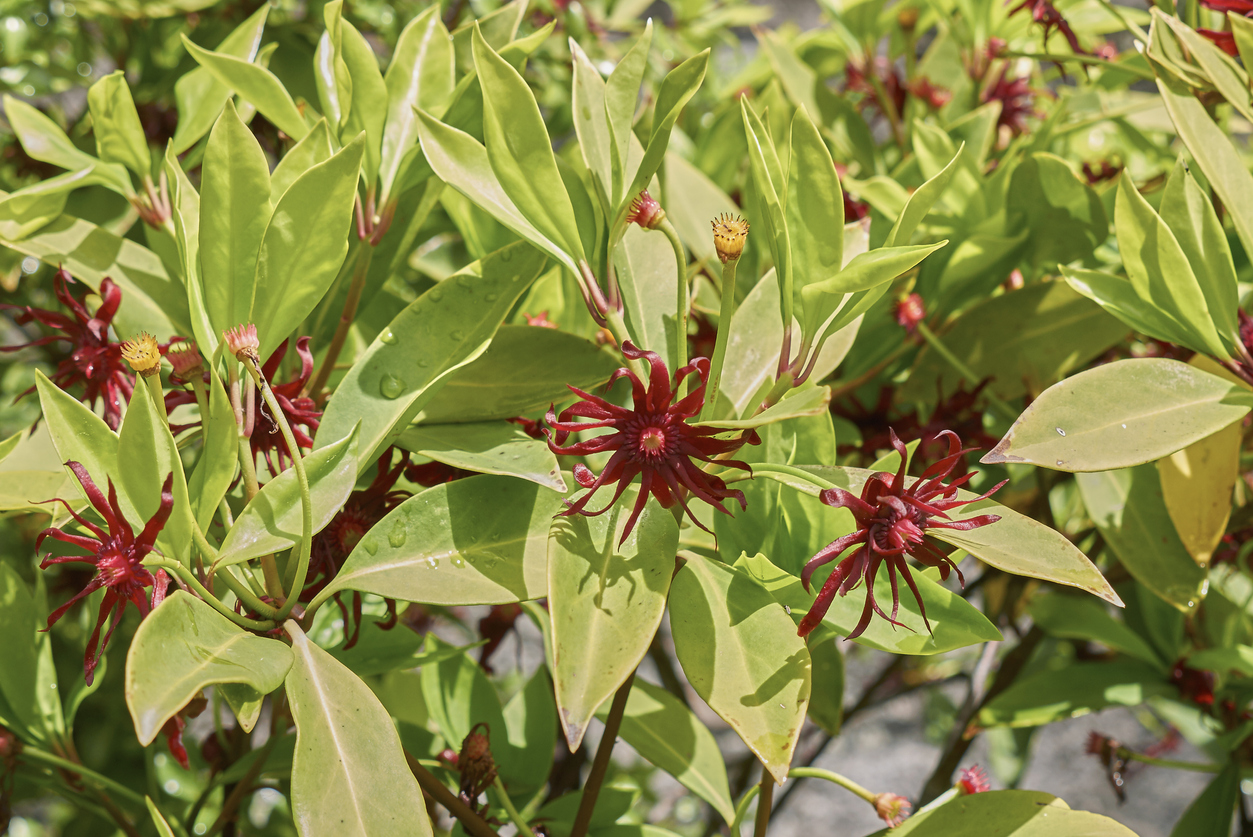
Two of the most popular forms of anise “tree,” Japanese anise (I. anisatum) and Mexican anise (I. floridanum), aren’t trees at all but shrubs. Japanese anise sometimes grows to 15 feet high and wide with oval glossy leaves and 1-inch, white, many-petaled, spring flowers reminiscent of magnolias. Its spicily scented wood makes it one of the best-smelling evergreens. Mexican anise tops out at 4 to 6 feet but has larger and more colorful dark pink to red 2-inch blooms. Hardy in USDA Zones 6 to 10 (7 to 10 for Mexican anise), neither requires much pruning nor attention. And, although kin to star anise, they aren’t edible!
2. Azalea (Rhododendron subsect. Tsutsusi spp.)
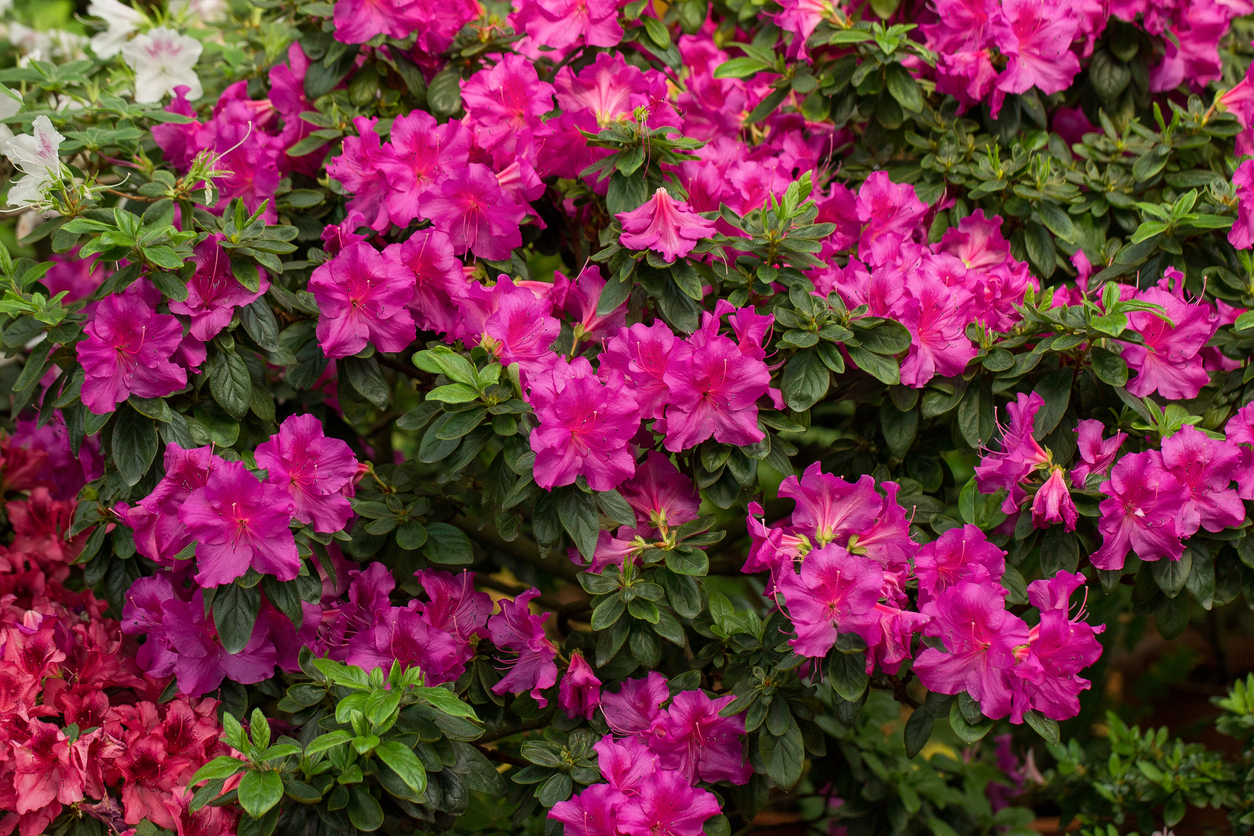
Beloved for their spring show of 2- to 3-inch blooms in a wide variety of colors, evergreen azaleas also remain popular for their ease of care. As Tom Hughes of the American Rhododendron Society notes, “Many evergreen azaleas never experience the pruning shears, since, for the most part, these plants are naturally well behaved.” The Tsutsusi subgenus is considered evergreen; others might be semi-evergreen, since they drop their spring leaves in autumn but retain their leathery summer leaves over winter. Azaleas vary in ultimate height from 1 to 8 feet. They also vary in hardiness from USDA Zones 5 through 11.
RELATED: 10 Garden Plants That Will Feed Backyard Birds in Fall and Winter
3. Bush anemone (Carpenteria californica)
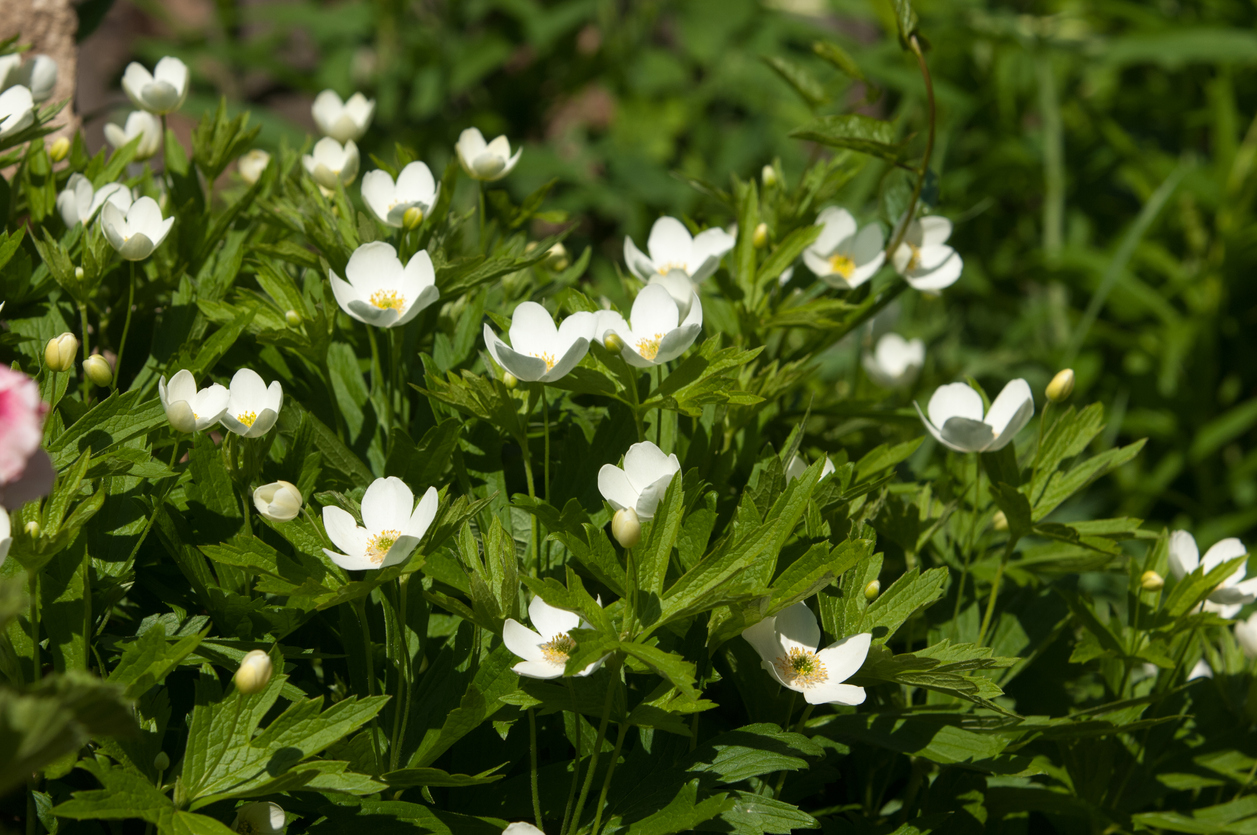
As its species name implies, this narrow-leaved shrub that can reach 8 feet in height is native to California. During late spring and summer, it produces masses of 1½- to 3-inch white blooms with yellow centers. According to the “New Sunset Western Garden Book,” edited by Kathleen Norris Brenzel, the bush anemone naturally assumes a rounded habit without pruning and “accepts ordinary garden conditions” with equanimity. However, it also ranks among the most drought-tolerant shrubs in USDA Zones 7 through 10.
4. Cotoneaster (Cotoneaster spp.)
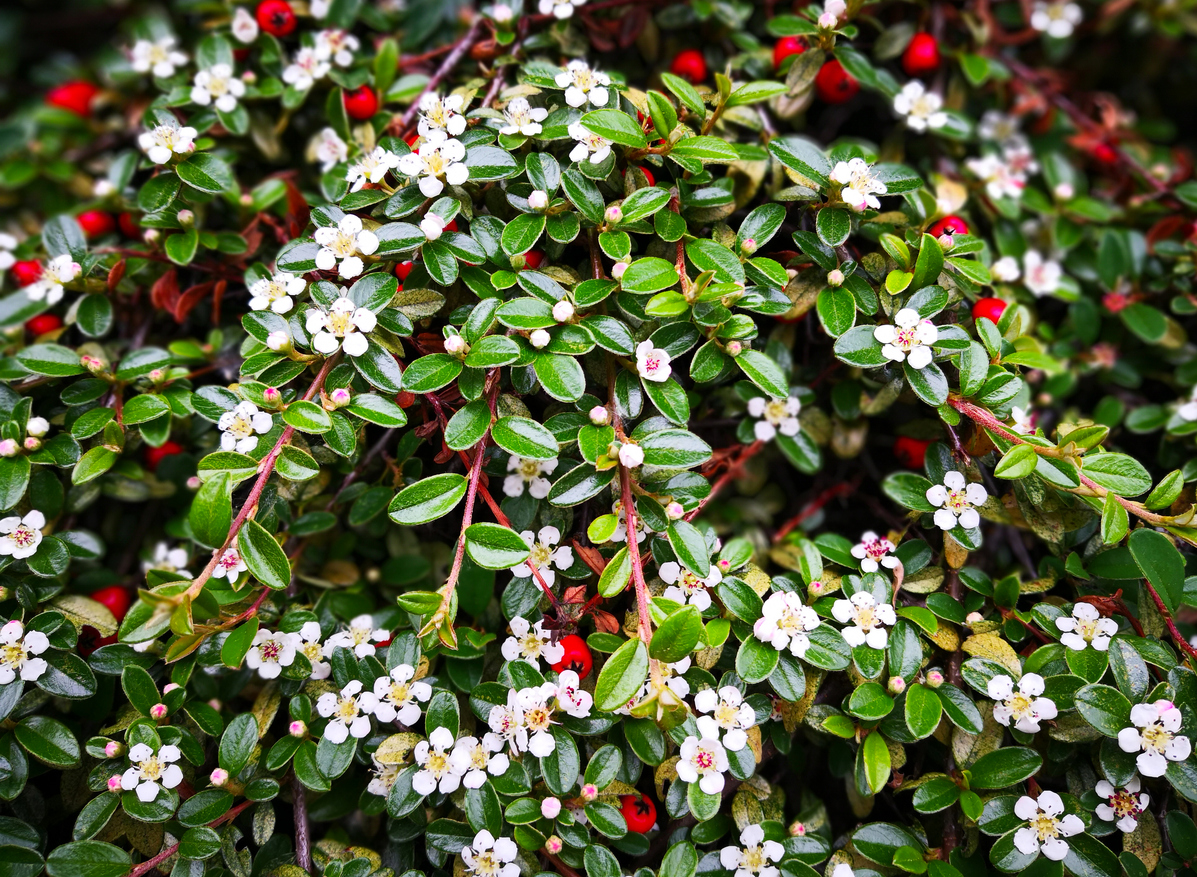
Cotoneasters vary from low-growing ground cover types such as the 12-inch bearberry cotoneaster (C. dammeri), to the nearly 3-foot Pyrenees cotoneaster (C. congestus) with a dense growth habit. The “weeping” willowleaf (C. salicifolius) variety reportedly can reach nearly 15 feet high, but averages 3 feet or more. Their hardiness also varies from USDA Zones 5 through 11. The shrubs’ flowers, which appear in spring, resemble very small single roses and will be followed by red or orange berries.
Most cotoneasters thrive with little or no maintenance, but some might be invasive. Keep in mind that not all cotoneasters have evergreen foliage; some are deciduous instead.
5. Firethorn (Pyracantha spp.)
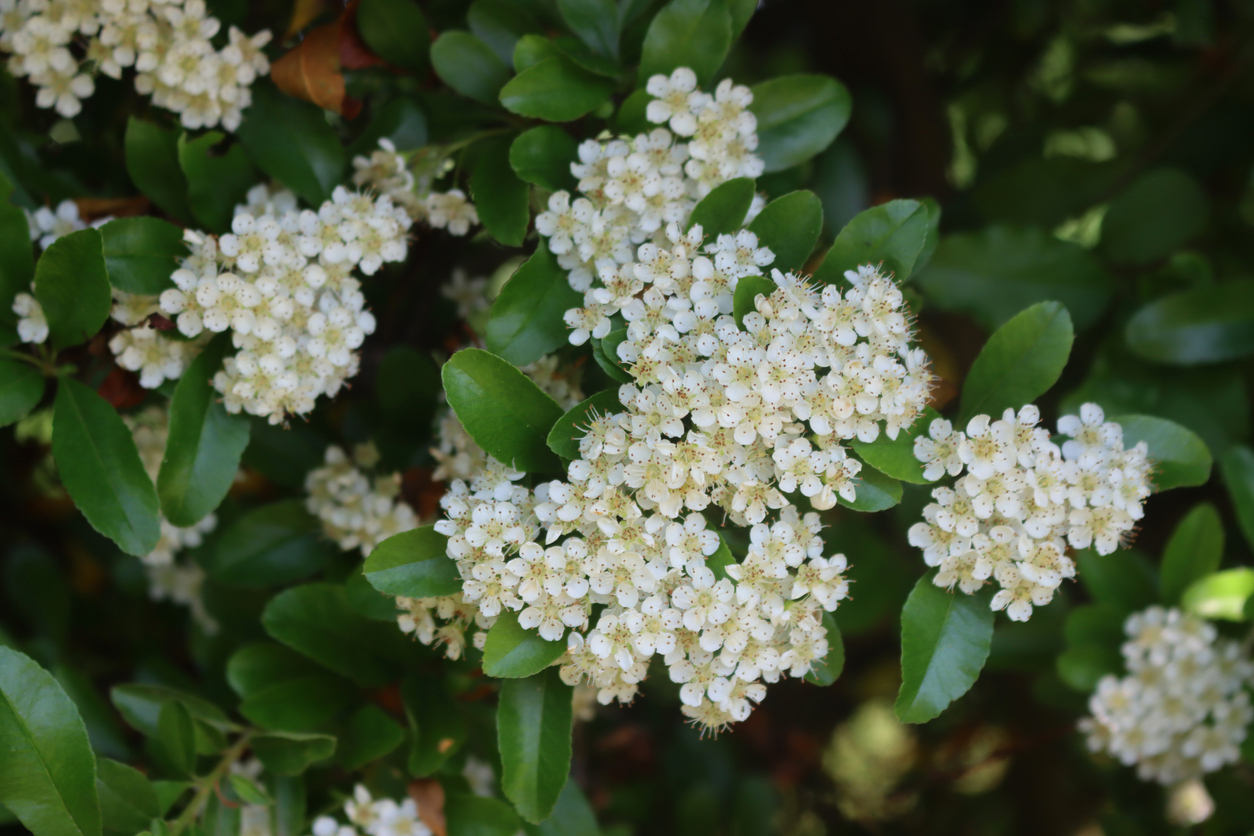
Speaking of low-care evergreens with berries, the fast-growing firethorn varies in height from 2 to 15 feet with glossy foliage, thorns, and clusters of off-white blooms in spring whose scent can be off-putting. Clusters of red, orange, or yellow berries appear in late summer and may persist over winter, depending on how hungry the local birds are. Although they look attractive (and flower and fruit more) when left to grow naturally, some can get leggy if not pruned every few years. Pyracantha hardiness varies from USDA Zones 6 through 10.
RELATED: Boost Your Home Security by Adding These Thorny Plants to Your Landscape
6. Holly (Ilex spp.)
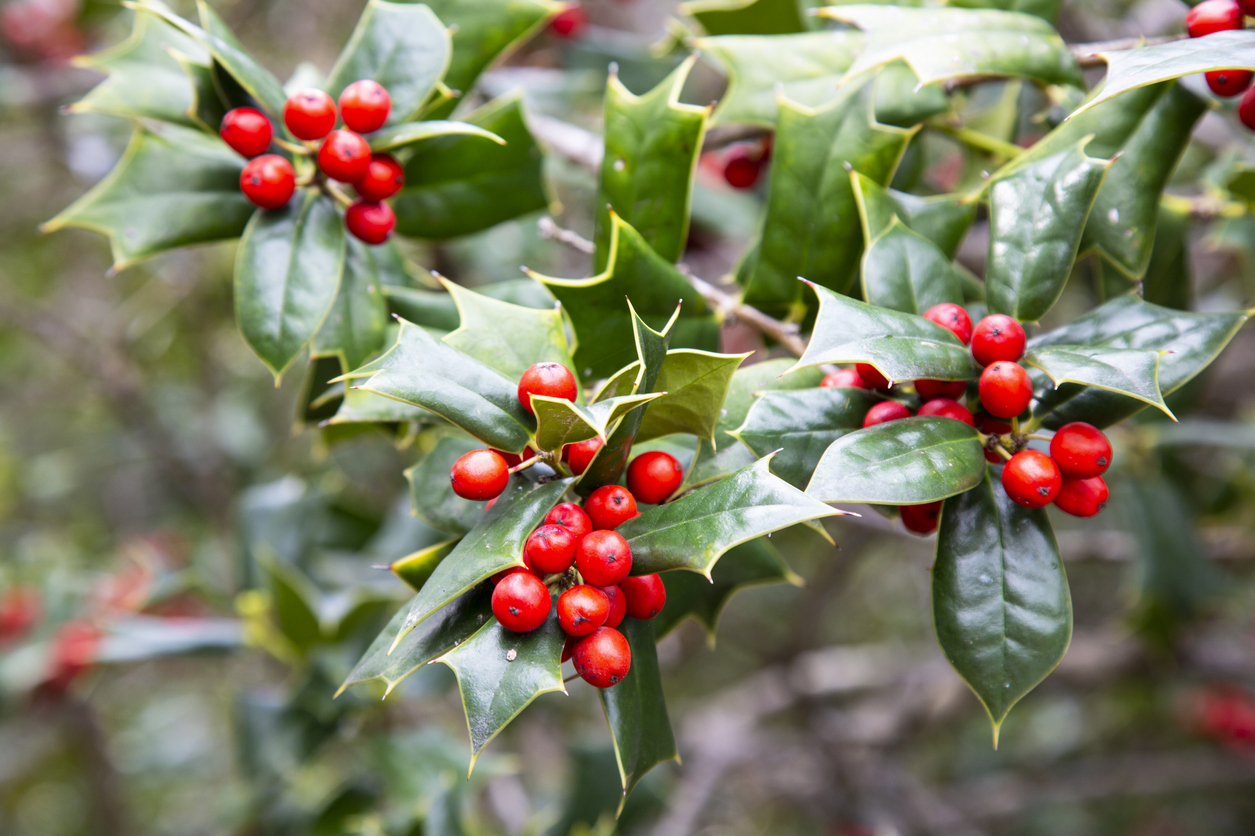
With their toothy, glossy foliage and red, yellow, or black berries, hollies don’t require much pruning unless you want to control their size—or harvest branches for Christmas decorations. They also come in sizes to suit every need from dwarf varieties that don’t surpass 1 foot high to giants that can reach 50 feet. Evergreen types vary in hardiness from USDA Zones 5 through 11 and you will need both male and female plants to get berries.
7. Mahonia (Mahonia spp.)
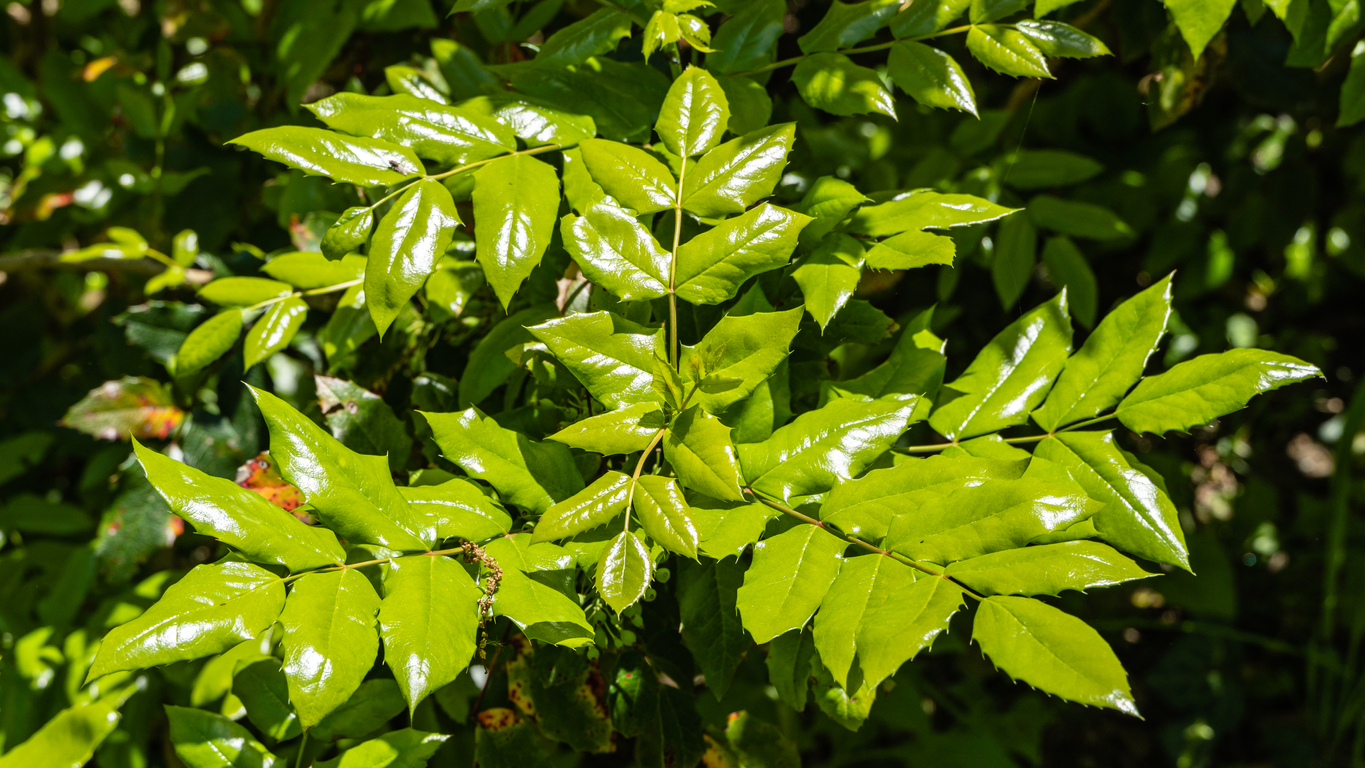
Mahonia foliage resembles that of holly, especially on M. aquifolium types. Those evergreens range in height from 2-foot cultivars of Oregon grape holly, such as Compacta, to 10-foot species such as desert mahonia (M. fremontii). Their hardiness varies from USDA Zones 5 through 11. The shrubs produce clusters of yellow blooms in spring followed by clusters of blue, red, or brown berries later. They seldom require any pruning except the removal of dead branches, placing them among the no-effort plants.
8. Manzanita (Arctostaphylos spp.)
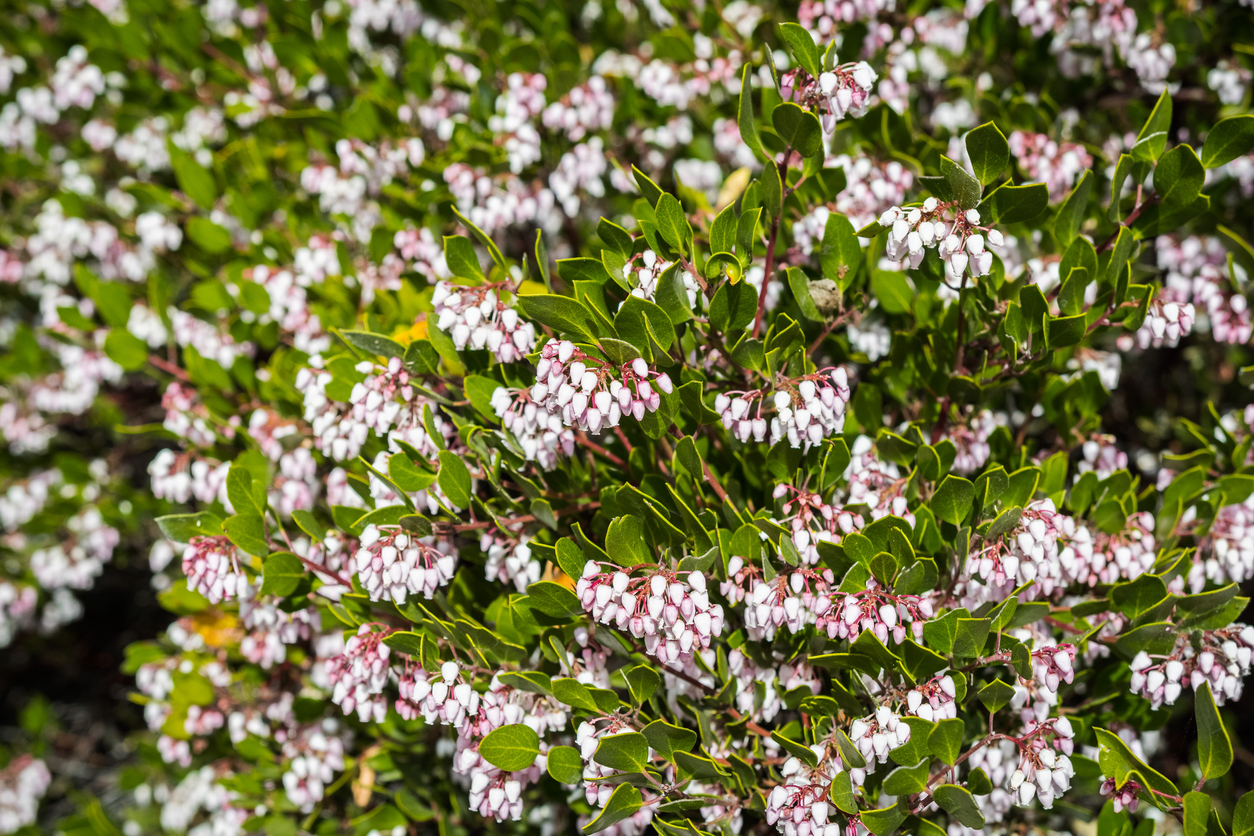
Native to the Western U.S. and drought-tolerant, manzanita species typically have small leaves and colorful, orange, purple, or red peeling bark. Their urn-shaped pink or white blooms appear in spring, red or brown fruits later. Varying from ground cover species with compact habits such as bearberry (A. uva-ursi) to the possibly 15-foot big berry manzanita (A. glauca), they also vary widely in the amount of cold they can tolerate. Although most only survive winters in USDA Zones 7 through 10, bearberry and alpine bearberry (A. alpina) are less heat-tolerant, and thrive as far north as USDA Zone 2, placing them among the cold-hardiest of evergreen shrubs.
9. Myrtle (Myrtus communis)

Myrtle bushes can eventually reach heights of 12 feet, but more often top off at about 6 feet with fragrant leaves and ¾-inch stamen-rich white flowers that appear in summer and eventually give way to ½-inch black berries. When left unsheared, myrtle makes an attractive and fragrant informal hedge in USDA Zones 8 to 10.
RELATED: 34 Amazing Plants That Are Native to North America
10. New Zealand Laurel (Corynocarpus laevigatus)
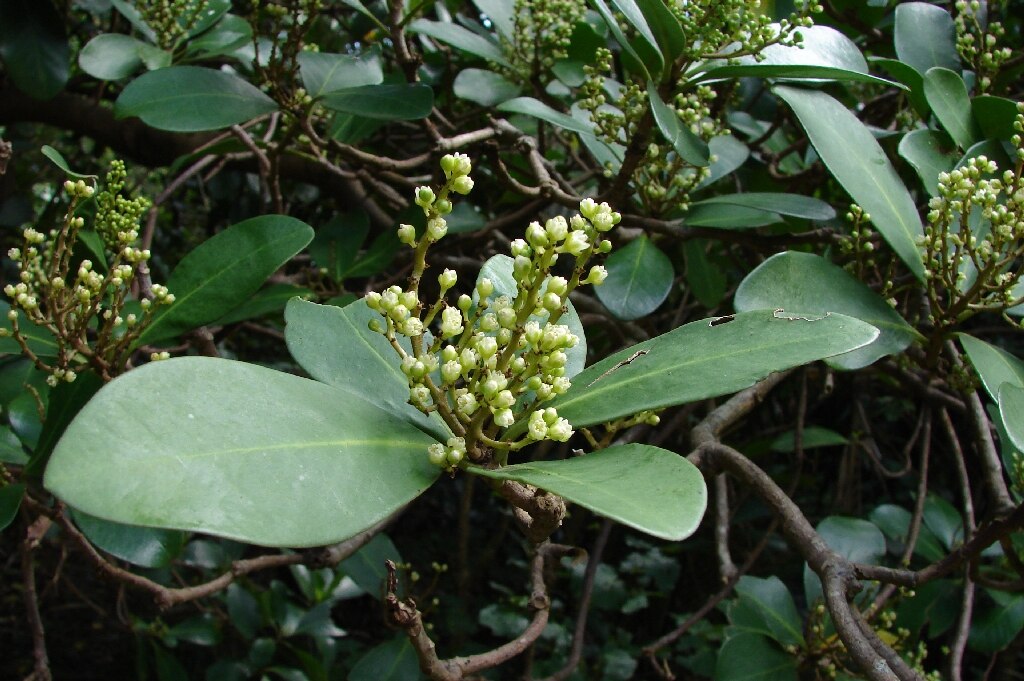
This laurel has large leaves, up to 5 inches long, and can grow to 40 feet but only after many years. Its erect clusters of minuscule white blooms will be followed by 1-inch orange fruits called karaka nuts. Don’t try consuming them, however, as those nuts are toxic. Karaka is an easy-care plant that grows in USDA Zones 9 through 11 and requires little trimming.
11. Osmanthus (Osmanthus spp.)
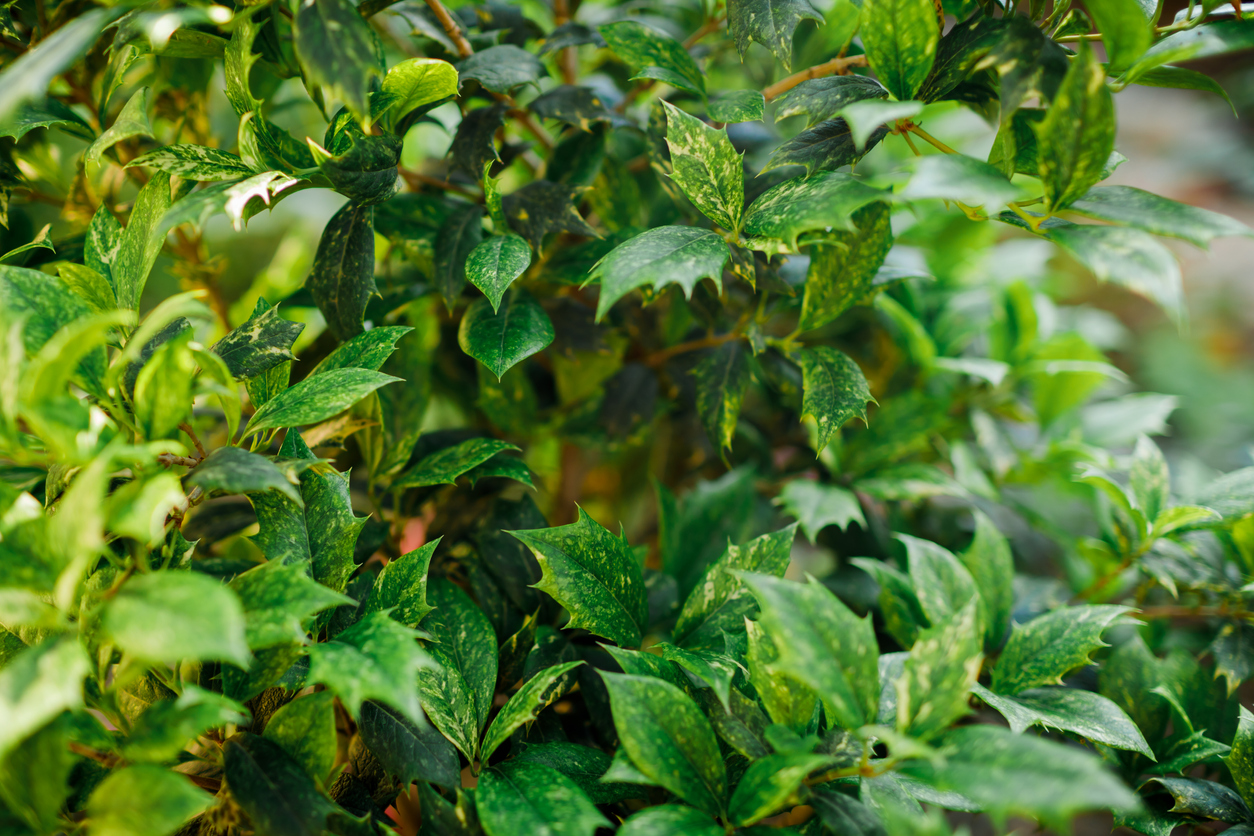
As with myrtle, one type of osmanthus—sweet olive—may grow quite large over a long period of time. Sweet olive usually stops at about 10 feet tall but can reach 25 feet, making it one of the tallest flowering evergreens. It and other types of osmanthus shrubs do fine in unclipped hedges, producing unobtrusive white blooms that are fragrant. Sweet olive is highly so, reportedly smelling like apricots rather than olives! Bloom time varies from spring or early summer for most species to early winter for O. heterophyllus, and the plants’ hardiness ranges from Zones 7 to 10.
12. Summer Holly (Comarostaphylis diversifolia)
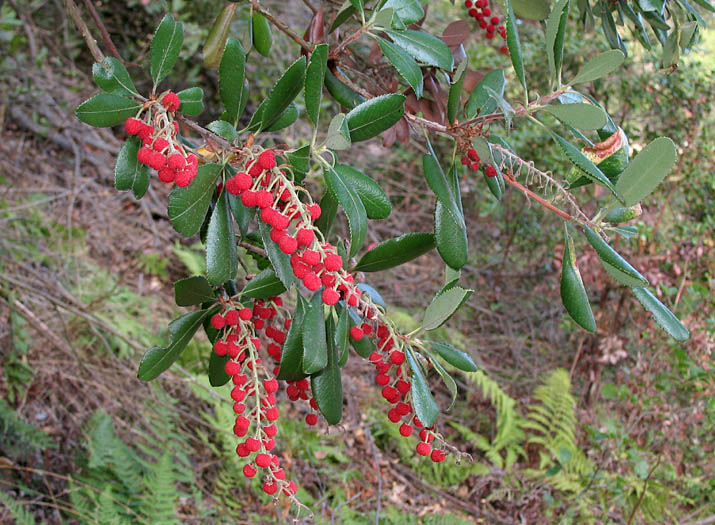
This drought-tolerant manzanita relative tops out at 20 feet or so, producing clusters of white blooms resembling lilies of the valley in mid-winter to mid-spring, and red berries for the birds later. Hardy in USDA Zones 7 through 11, It doesn’t require pruning unless you want to limit its height.
13. Sweet Box (Sarcococca spp.)

Gardeners who don’t want to be boxed in by the perceived necessity of shearing true boxwood may want to try this sweeter and less demanding variety instead. S. orientalis, sometimes called Christmas box for its small and fragrant winter blooms. In general, sweet box ranges in size from ground cover types such as S. hookeriana to 5-foot species such as S. confusa and in hardiness from USDA Zones 5 to 10. According to Titchmarsh, it gets by just fine with no trimming at all.
14. Sweetspire (Itea ilicifolia)
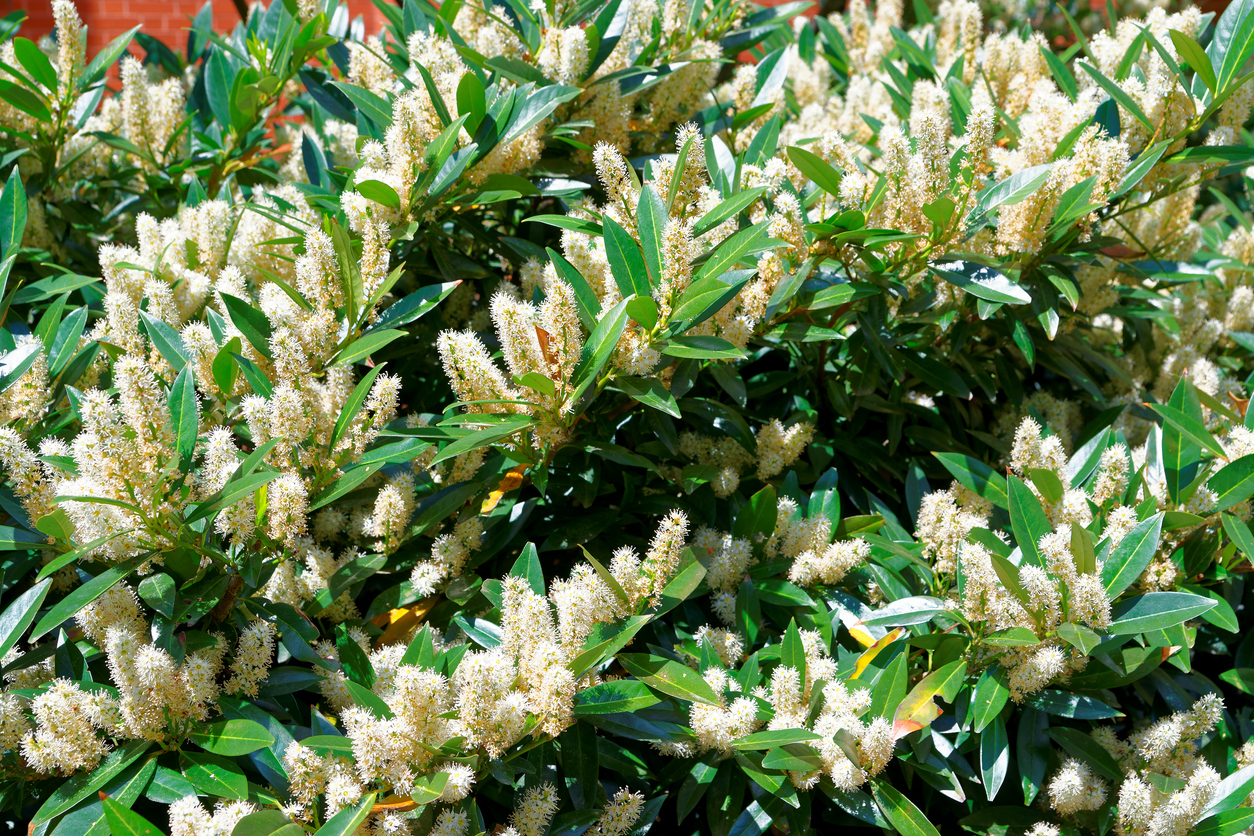
Another “sweetie,” this one more closely resembles holly than box and sometimes is called hollyleaf sweetspire for its glossy, spiny foliage which requires little pruning. It grows to 15 feet in USDA Zones 7 through 10 and, in late summer and autumn, it may or may not produce dangling racemes of greenish-white fragrant blooms. Those reportedly appear more profusely in the colder areas of its range than in the warmer ones.
15. Tea Tree (Leptospermum spp.)
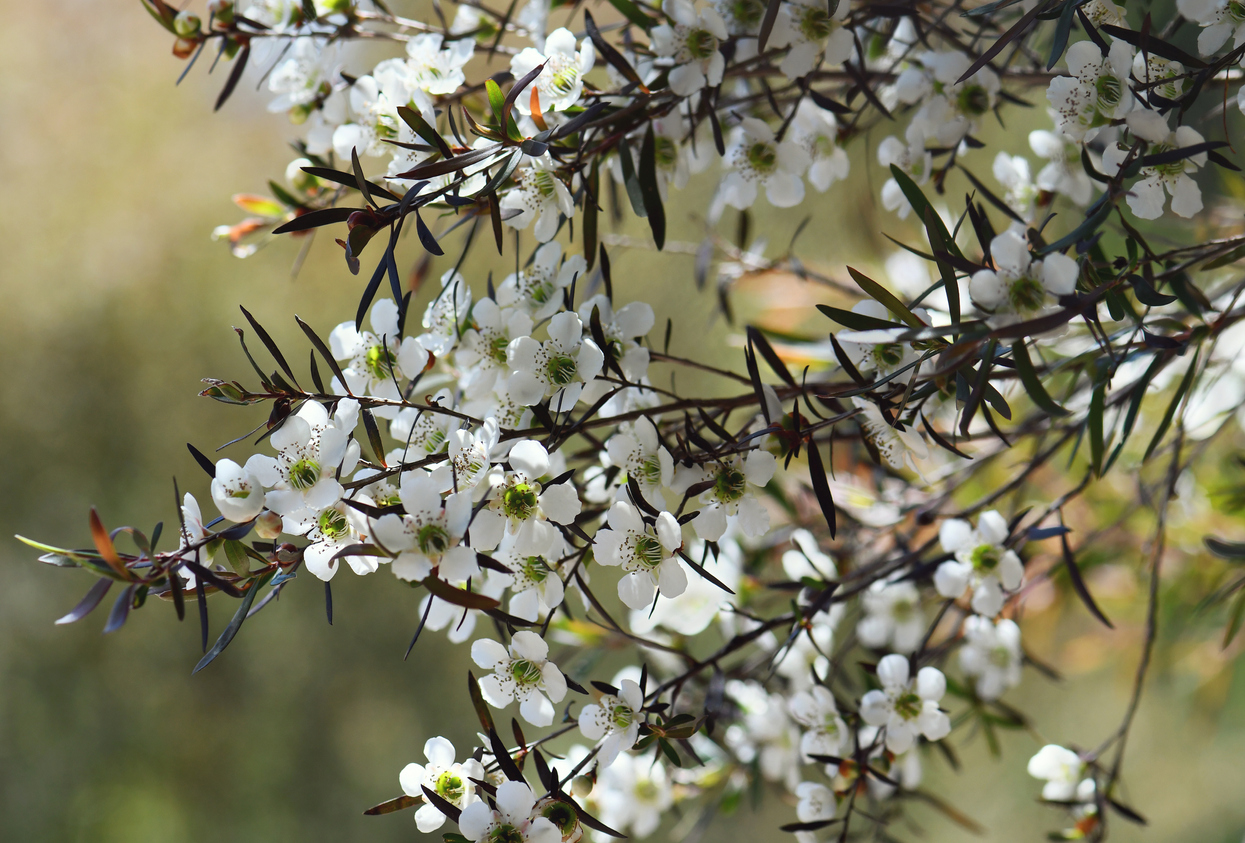
Although called trees, many leptospermums actually are shrubs. (These Australian species related to myrtle aren’t genuine tea either!) Among the full sun shrubs and varying in ultimate height (in tree form) from 1 to 30 feet, they generally have small leaves and produce single 5-petal, sometimes fragrant white, pink, or red flowers varying from ½ inch to 1 inch across in spring or summer. If grown in well-draining soil, they seldom require care of any kind, making them the lazy gardener’s cup of tea!
